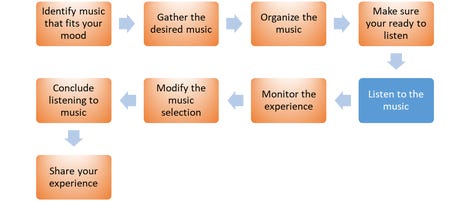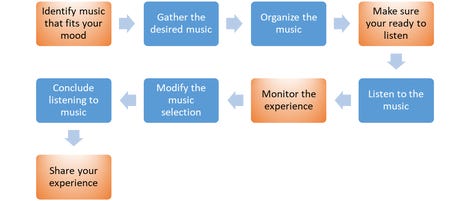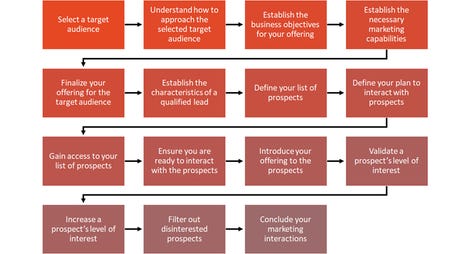The CRM industry: A new science for customer experience | ZDNet
I’ve known Mike Boysen for more than a decade as a thought leader, a practitioner, and, most importantly, a dear friend. His perspective — very similar to mine — is built around “Jobs to Be Done,” which you will learn about in his article below. This is an important post about how the CRM industry has to start seeing customer experience and get past all the buzzwords and phrases like “we have to delight the customers all the time.” That’s absurd and impossible. Mike has a far more realistic approach to customer experience, and he’s addressing vendors and practitioners in the CRM industry on the “why” and the “how.”
Take it away, Mike!
For those of you who are CRM, CX, or Martech professionals, I have some bad news — the industry is stuck. I know the industry is booming, and I’ve been saying this for a few years. But when you look at the long tail of the Martech landscape, it shows a diminishing number of seats spreading out over a quickly growing number of brands. Not one of them appears to be a non-traditional competitor — the kind that is known for disruption. But it seems clear that we have an industry that is vastly over-serving its customers in very specific areas and failing to identify the underserved areas where innovation opportunities abound.
I recently wrote a blog post, How to “pre-lease” vertical space in the Martech landscape, that used the Martech Landscape as an example of how we are stuck in an innovation loop. While the CRM/CX/Martech industry booms at the top, they are not looking for, or resolving, higher-order problems. Yet that’s essentially what customers/consumers expect from innovations.
What we are seeing, instead, is an exercise in the law of diminishing returns, where the big platforms are adding cost and complexity wrapped in stories about innovation. Customers have simply not reacted yet. We’ve been trained to wait for the next release, only to get access to one more set of features. It seems cool at first, but it adds cost and complexity. The long-tail, which focuses on the same problem, acts as a defensive moat by validating the focus of the large vendors and pulling in even more startups who see a large pool of flailing tadpoles.
I believe time is running short for the incumbents (and I’m sure they would vigorously disagree).
The loop we are caught in is focused on finding ways to bring new inventions — not innovations — into the mix to get the same thing done. What they are not focused on is using these cool new inventions (and other existing capabilities) to get more of their customers’ jobs done. This thinking is rooted in Jobs Theory, which was made famous by Clayton Christensen of Harvard Business School.
On the one hand, we have new technologies, like Artificial Intelligence, which are often applied to the wrong problem. On the other hand, we have the same chefs constantly reinventing their menu. Terms like CX have become the croutons on top of a word salad. What are we really doing to help the “customer experience”? Do customers really want to engage with your brand? Maybe, in some circumstances. Validating these beliefs depends how you ask the question, and I get more into that in other posts if you’re interested (I’ve provided plenty of links).
Brands do need to communicate, interact, and share resources effectively during (certain) customer decision journeys. But do customers need an immersive experience when they are simply trying to consume a service or use a product? More importantly for this conversation, does Martech need to support more than simply the theater of marketing, or are there opportunities to improve the theater of marketing itself?
Effective theater requires detailed planning and lots of rehearsing. I make the case for this in The Subjective Magic Quadrant (SQ) for Digital Marketing, using a bit of humor to soften things up a bit. I also follow up with a detailed, value-based performance model in another piece (linked below). It’s my opinion that more of the “Jobs” enterprises have can be integrated into a platform. However, even a mature industry like Martech has much room for improvement — if you know where to look.
There are many areas for innovation in an Enterprise technology, but is there room for improvement in Martech?
Why is it so hard for companies to see where future revenue will come from?
In yet another post I wrote recently, Why is “Getting the Entire Job Done on a Single Platform” so Important for Customer Experience?, I ask the reader if their business sells experiences, or if they actually sell products and/or services. This is an important question. Most businesses do not sell experiences. You need to understand what you’re selling now, or it’s going to be extremely difficult knowing what you need to be selling in the future — or how successful you’ll be at it.
Some businesses — such as restaurants — are selling an experience, depending on the situation of a particular customer (a date night is different than getting food on-the-go, where friction is the enemy). And others clearly sell experiences and memories 100% of the time, e.g., Disney World, a vacation cruise, etc.
Many of the CX/Martech vendors make the pitch that their technology will create better experiences for your customers. That sounds great, but they’ve promised things like that before — way back when they were called CRM, or even SFA. But is that even what they should be focusing on? The reality is that a service is not an experience. That’s not to say that you don’t experience a service. When we experience services, they are either frictionless (not memorable = good) or they fail to some degree (memorable = bad).
Here’s what’s making this complicated: If we take our kids to Disney World, we’re doing it for the experience, the memories. But Disney needs to provide an array of services that work seamlessly and with zero friction, so the experience they are selling is not overshadowed by the bad experience of a service failure. The more services they need to provide, the more chance of a failure.
Simplifying, systemizing, and/or automating these services is common sense.
If you’re following me to this point — i.e., services do not equal experiences — then we can move on to a new concept that describes what the overall customer experience really is. This is going to be critical in order to understand my perspective on Martech.
Customers have goals and objectives in their lives. One example might be to get to work in the morning. Another might be to maintain a comfortable climate in their home. And most of us have probably had the desire to listen to music on occasion. These objectives get to the heart of how I frame customer experience, and they tie directly back to the theory on Jobs that I mentioned above. We all have Jobs-to-be-Done in our lives.
How should you really view customer experience as a business (provider or customer)?
Customer Experience needs several visible and measurable components if our enterprise initiatives are to be successful, and if Martech is to get to the next level.
- Solution providers need to be focused on the right problem or objective
- The right problem or objective needs to be defined and scoped properly
- The solution they design needs to solve the right problem or objective as completely as possible
- The services supporting the solution should be automated away, where possible
- If the solution does not (or cannot today) solve the entire problem or address the entire objective, the solution provider must strive to own the integration with non-traditional competitors who complement their solution
- The end-goal is to address the entire problem or objective on a single platform
I suggested that the journeys be automated away, where possible. It did not say “create increasingly immersive and friction-filled journeys to delight customers” because that won’t delight them. Helping them get their job done faster and with fewer errors will delight them — even if their job is the pursuit of an experience.
To explain this further, I’m going to use a simple example.
Back in the 1970s, people who wanted to listen to high-quality music had to make an investment in both time and money. The money starts with the solution stack. If you wanted hi-fidelity sound in your home, you needed to invest in each of these solutions to be able to listen to music.
Remember this: People cobble together solutions to get the entire job done.

Most solutions offer complexity that customers don’t really value. In this case, they were cobbling solutions together just to get a single step done
The image above demonstrates how complicated it was just to listen to the music, since each of these solutions came with their own consumption chain. I like to refer to this as the “struggle stack” because every single relevant box required effort — some more than others.
For each product above, consumers might have had to:
- Select it: We had to do the research to figure out which brand or configuration we wanted to purchase.
- Purchase it: We had to figure out how we could get our hands on it.
- Receive it: Depending on where we got it, this could be a nightmare. If we ordered from a catalog, there was no telling when it would arrive.
- Install it: Hopefully, we were handy.
- Configure it: We had to stare at the lights on our equalizer and fiddle with them for hours until we got the perfect sound.
- Use it: We had to clean the vinyl and the needle to make sure there was no snap, crackle, and pop.
- Store it: This is relevant to any miscellaneous pieces (like cleaning materials) and the music itself.
- Maintain it: Everything had to stay clean, and broken pieces replaced
- Upgrade it: In a hardware-only world, that was a major expense.
- Replace it: Go through the entire cycle again
Where there is effort, there is the opportunity to consume time and make mistakes. At the time, a better way was not available (technology and infrastructure). But as product people, we need to see further into the future than our customers can. The only way to do that is to eliminate the current solutions from our analyses. The best way I’ve found to do that is to focus on the customer’s underlying job-to-be-done (an objective).
When we aggregate the struggle stack across the solution stack, we get the struggle multiplier. Collapsing the struggle stack and the struggle multiplier into one (a single platform, highly automated) is the heart and soul of innovation.
I’ve only highlighted the solution stack for one of the steps in the job of listening to music: the listening step. If you didn’t scope the problem out properly, the Walkman could have been the last innovation we ever saw regarding listening to music. I rehash this in a little more detail here.

Music solutions in the ’70s were only focused on listening. We had to cobble the other solutions together to get the job done.
The map above is not about solutions, so it could have been developed in 1938 or 1538. The key elements are the steps — or sub-objectives — that exist within the job-to-be-done. They provide a proxy for the for the future-state of listening to music without worrying about how we do it. Our goal as solution providers should be to understand these customer goals, so we can continually scan emerging techniques or technologies that can help us help our customers on a single platform — or at least a single brand. This can be the foundation of your long-term strategic growth roadmap.
Let’s briefly look at the iPod
Fast forward a few decades of technology and infrastructure development, and we suddenly have 1,000 songs in our pocket. We could now listen to hi-fidelity music on the go; the world had never seen anything like this. We no longer had to go to a record store to purchase music — we could do it on the computer. We could change music quickly if our mood changed.
The iPod eliminated the entire struggle stack and struggle multiplier of the ’70s, getting more of the job done as well. It also added numerous contexts to the job (e.g., on-the-go) as well as situational factors (e.g., not disturbing people around you). The market rewarded Apple handsomely for this.

The iPod helped us get more steps done. It got more of the Job done on a single platform
Then we witnessed a well-known brand get trapped. Microsoft decided they could make a similar product that was at least as good as the iPod. It matched the iPod feature-for-feature, and then added a few more. Certainly, their customer-base would be loyal enough to switch back to a Microsoft product, they thought. But the purpose-branded product they came up with, Zune, flopped gloriously. Why is that?
It requires a significant amount of additional value to drive change
Since that time, many of us have moved on to the streaming world. Pandora led the way, and now we have the ability to listen to whatever we went whenever we want wherever we want Streaming services, with their embedded AI, addressed all of the steps in the job.

Streaming solutions helped us get all the steps done. The platform also helped us get “related” jobs done
What can we learn from this? After all, Spotify — and streaming solutions in general — don’t look anything like an iPod. So, what gives? The answer is simple:
- They got the entire job done on a single platform.
- They got the job done differently.
- They got the job done with fewer features.
Back to the word salad
Our industry is stuck in an innovation loop: Words become innovations, which become flops. We embrace the things we’re good at — like failing. The reality is that we need to think about the underlying reason the first salesperson purchased ACT! Why do you think that was?
I believe they were reacting to the ultimate objective of any enterprise that is trying to achieve profitable growth, and we need to recognize a set of integrated capabilities that must exist in order for that to be successful. Some of those fall outside of the currently existing competencies of CRM/CX/Martech, much like the music industry didn’t address much beyond just listening. So, if we simply look at developing revenue as our focal point — one of five core drivers for achieving profitable growth — for innovation purposes, are we getting the entire job done on a single platform? Are there opportunities for improvement? Think of the component stereo system. Even when they collapsed the struggle down to nothing, the solution was not getting the entire job done.
What is the desired customer experience of professionals that are held accountable for developing revenue?

Can you point to the steps in this Job that Martech does not address when developing qualified leads? How many solutions do you cobble together to get even one of these steps done?
I’ve addressed this question in quite some detail in prior blog posts. Here’s an index of my series on analyzing the Market of Marketing in a different way for innovation. If you’re interested in learning more about how to search for innovation in and around the traditional CRM space, you may enjoy it. In addition to that, I’ve provided a complete model for a major component of revenue development that you may want to have a look at as well. It’s all about what marketers are supposed to be doing: developing qualified leads. You would not believe the kind of data model that results from a properly structured survey with this focus, and the array of questions it answers. Most of the questions aren’t even being asked today.
The key to any success is knowing where to start. I’ve been writing about and developing the entry point to a new way of viewing our wonderful world of CRM/CX/Martech for years. And I’m suggesting that someone needs to look at the service itself. If you don’t, someone else will.
Thank you, Mike!
Watch here and elsewhere for a big CRM Playaz announcement. Coming soon!
For all the latest Technology News Click Here
For the latest news and updates, follow us on Google News.
